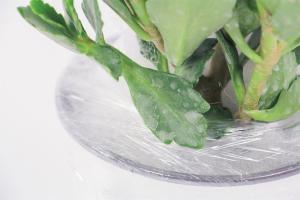Why Are the Bottom Leaves on Tomato Plants Turning Yellow?
Tomatoes are one of the most popular home-grown vegetables. They are relatively easy to grow and can produce abundant yields, making them a favorite of gardeners. However, yellowing of the bottom leaves on tomato plants is a common issue that can be a cause of concern for growers. In this article, we will help you understand some of the reasons why this occurs and how to address the issue.
Possible Reasons for Bottom Leaves Turning Yellow
There could be several reasons why the bottom leaves on your tomato plants are turning yellow. One of the main causes is a lack of nitrogen. Nitrogen is an essential nutrient that plants need to produce foliage. If the soil in which the tomato plant is growing lacks nitrogen or does not contain enough, the leaves can turn yellow. Another common cause is over-watering. Over-watering can cause the roots of the plant to rot, which can restrict the uptake of water and nutrients, resulting in yellowing of leaves.
In addition to the above, nutrient imbalances, pH problems, and inconsistent watering can also cause yellowing of tomato leaves. Pests like spider mites or disease like bacterial wilt can also lead to leaves turning yellow.
How to Address the Issue
If you notice yellowing of the bottom leaves on your tomato plants, the first step is to determine the cause. Check the soil moisture levels to see if the plant is over-watered or under-watered. If the soil is too wet, allow it to dry before watering again. Conversely, if the soil is too dry, you may need to water the plant more often.
Another option is to fertilize your tomato plants with a nitrogen-rich fertilizer. Nitrogen will help the plant produce healthy foliage and prevent yellowing of leaves. However, be sure to follow the instructions on the fertilizer package as over-fertilization can also lead to leaf yellowing.
If you suspect that pests or disease may be the culprit, inspect the plant carefully for any signs of infestation. Spider mites can be removed by washing off the leaves with a strong jet of water. Bacterial wilt, on the other hand, may require removing the entire plant to prevent spread to other plants in the area.
Preventing Yellowing of Tomato Leaves
Preventing yellowing of tomato leaves is often easier than trying to address the issue after it has occurred. To prevent the problem, start by selecting the right cultivar for your area. Choose a variety that is known to be disease-resistant and is suitable for your climate. Ensure your soil is rich in nutrients and has good drainage. Water consistently and avoid over-fertilization. Keep an eye out for any signs of pests or disease and take immediate action if necessary.
In conclusion, yellowing of leaves on tomato plants is often a sign of a problem that needs to be addressed. By understanding the underlying causes of the issue and taking appropriate steps, you can prevent further damage and ensure healthy and bountiful tomato crops each season.

 how many times do yo...
how many times do yo... how many planted tre...
how many planted tre... how many pine trees ...
how many pine trees ... how many pecan trees...
how many pecan trees... how many plants comp...
how many plants comp... how many plants can ...
how many plants can ... how many plants and ...
how many plants and ... how many pepper plan...
how many pepper plan...































